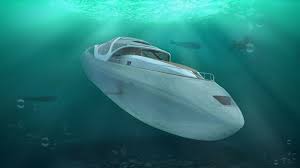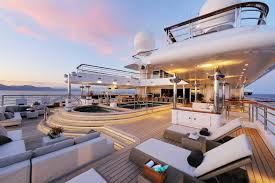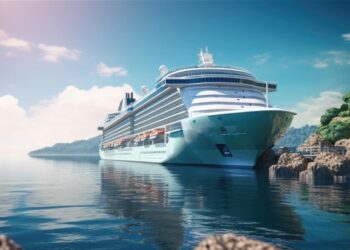Yacht Design for Extreme Conditions: Building Yachts for Polar Expeditions
Polar expeditions are some of the most challenging and adventurous journeys that can be undertaken, and require specialized yachts that can withstand extreme weather conditions and navigate through ice-filled waters. In this article, we explore the design and construction of yachts for polar expeditions.
Design Considerations
Yachts designed for polar expeditions require a range of specialized features and capabilities that are not found in traditional yachts. Some of the key design considerations for yachts for polar expeditions include:
Ice-class hulls: Yachts designed for polar expeditions require ice-class hulls that are reinforced to withstand impact with ice and provide greater stability in icy conditions.
Advanced propulsion systems: Yachts require advanced propulsion systems, such as pod propulsion or azimuth thrusters, that can provide greater maneuverability and control in ice-filled waters.
Advanced navigation systems: Yachts require advanced navigation systems that can provide accurate and up-to-date information about ice conditions, weather patterns, and other potential hazards.
Enhanced insulation: Yachts require enhanced insulation to protect against the extreme cold temperatures of polar regions.

Advanced heating systems: Yachts require advanced heating systems that can maintain a comfortable temperature inside the yacht, even in extreme cold conditions.
Specialized equipment: Yachts require specialized equipment, such as ice drills, for breaking through thick ice, and Zodiac boats for exploring ice-free areas.
Construction Materials
The materials used in the construction of yachts for polar expeditions are also specialized and designed to provide maximum strength and durability in extreme conditions. Some of the key materials used in the construction of yachts for polar expeditions include:
Steel: Steel is the most common material used in the construction of yachts for polar expeditions, due to its strength and durability.
Aluminum: Aluminum is also commonly used in the construction of yachts for polar expeditions, due to its lightweight and corrosion-resistant properties.
Composite materials: Composite materials, such as carbon fiber and Kevlar, are also used in the construction of yachts for polar expeditions, due to their strength and weight-saving properties.
Examples of Yachts for Polar Expeditions
There are a number of yachts designed specifically for polar expeditions, each with their own unique features and capabilities. Some examples of yachts for polar expeditions include:
The Hanse Explorer: The Hanse Explorer is a luxury yacht designed for polar expeditions, featuring an ice-class hull and advanced navigation and propulsion systems.
The Arctic P: The Arctic P is a research vessel designed for polar expeditions, featuring a reinforced hull and specialized equipment for scientific research.
The Legend: The Legend is a luxury yacht designed for polar expeditions, featuring an ice-class hull and a range of amenities, including a swimming pool and helicopter landing pad.
Challenges and Considerations
Designing and building yachts for polar expeditions is a complex and challenging process that requires specialized knowledge and expertise. Some of the key challenges and considerations for designing and building yachts for polar expeditions include:
Cost: Yachts for polar expeditions are typically more expensive than traditional yachts, due to their specialized features and capabilities.
Environmental impact: Yachts for polar expeditions can have a significant environmental impact, and it is important to consider the potential impact of yacht travel on fragile polar ecosystems.
Safety: Yachts for polar expeditions require advanced safety features and procedures to ensure the safety of passengers and crew in extreme conditions.
Looking Ahead
As interest in polar expeditions continues to grow, the demand for yachts designed for polar expeditions is also expected to increase. Yacht designers and builders will continue to explore new and innovative ways to create yachts that can withstand extreme conditions and provide a comfortable and luxurious experience for passengers.
In addition, the development of yachts for polar expeditions can also contribute to wider industry efforts towards sustainability and responsible yachting. By designing and building yachts that are energy-efficient and eco-friendly, yacht designers and builders can help to minimize the environmental impact of yachting and contribute to a more responsible and sustainable industry.
Furthermore, the development of yachts for polar expeditions can also lead to the development of new and innovative technologies and solutions that can be applied to other areas of yacht design and construction. For example, the use of advanced insulation and heating systems in yachts for polar expeditions can be applied to other types of yachts, providing greater comfort and energy efficiency for passengers and crew.
In addition, the development of yachts for polar expeditions can also contribute to wider efforts towards scientific research and exploration. Yachts designed for polar expeditions can provide a platform for scientific research in areas such as climate change, oceanography, and ecology, and can help to expand our understanding of the polar regions and the impact of human activities on these fragile ecosystems.
It is also important to note that the development of yachts for polar expeditions must be carried out in a responsible and sustainable manner. Yacht designers and builders must take into account the potential environmental impact of yacht travel on polar ecosystems, and work to minimize this impact through the use of eco-friendly materials and technologies, responsible yachting practices, and engagement with local communities and stakeholders.

Conclusion
The design and construction of yachts for polar expeditions is a specialized and challenging process that requires specialized knowledge and expertise. By embracing these challenges and addressing the associated considerations, the yachting industry can continue to innovate and evolve, pushing the boundaries of what is possible in yacht design and construction while also contributing to wider industry efforts towards sustainability, responsible yachting, and scientific research and exploration.
It is also important to note that the human element remains essential in the development of yachts for polar expeditions. The expertise and creativity of yacht designers and builders are still crucial in creating yachts that meet the needs and desires of their clients. The use of advanced technologies and materials can enhance and improve the design and construction process, but it cannot replace the importance of the relationship between the designer or builder and the client.
Additionally, the development of yachts for polar expeditions can also enable greater customization and personalization of yachts. By designing yachts that are tailored to the specific needs and desires of their clients, yacht designers and builders can create yachts that are truly unique and reflective of their owners’ personalities and lifestyles.













